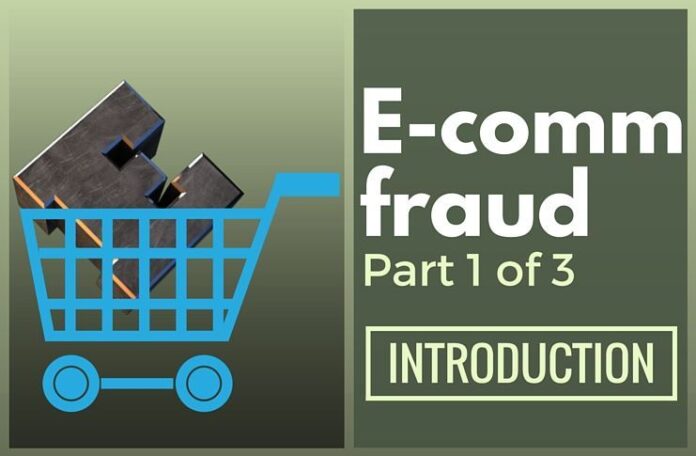
E-commerce fraud
This is Part 1 in a series of 3 articles on E-commerce fraud.
[dropcap color=”#008040″ boxed=”yes” boxed_radius=”8px” class=”” id=””]E[/dropcap]-commerce boom in India over the past three years has been one of the most exciting times in India’s history post independence. We hear about growth prospects, job creation, exciting use of technology built indigenously and thirty something year old billionaires all of which presents tremendous excitement. Adoption of e-commerce has been fairly decent & its penetration in Tier-2 and Tier-3 cities is empowering to these towns where malls are few or too expensive. We may have not even scratched the tip of the iceberg.
Everyone of the investors is drunk and oblivious to the risk of throwing money without looking at the books. As a senior executive, I can warn once but I cannot be more loyal to my employer’s money than my employer himself.
What is disturbing though is the extent to which money of the investors, mainly Venture capitalists is being burnt without adequate control. In fact, the party as in the investment in Indian e-commerce seems to be waning especially since October 2015 as investors are waking up from their severe hangover.
[dropcap color=”#008040″ boxed=”yes” boxed_radius=”8px” class=”” id=””]T[/dropcap]his writeup is a first hand experience of the low level fraud in e-commerce, how it all started, some very common use cases, how it sustained for so long, what does it mean to the Indian consumer and small online/ mobile enabled business owner/ supplier, data science techniques used to counter this and ways of curbing this menace of fraud and measures that should be taken by lawmakers to generate real growth that makes India not just a “get-in and get-out” for foreign investors. We try to cover industries like Radio-Taxi companies, E-commerce companies and “Food Delivery” startups.
Fraud is a term that we generically & liberally use in this essay that encompasses risky and undesirable transactions for a company. Not many of these actions by customers or suppliers (Taxi drivers in case of Radio Taxi e-commerce or small vendors selling their products in an e-commerce marketplace) could be tried in court for violations of laws. Laws that exist are not well understood or up to varied interpretations which makes things more complicated.
Incentives, Targets, Return-With-No-Questions-Asked and Cash-On-Delivery invite fraud
Before we jump right into understanding fraud, we need to understand what causes fraud. In order to get brand ubiquity of one’s e-commerce site and mobile application, companies resort to Marketing Incentives. E-commerce marketing incentives done to grow the business are broadly intended
- For growth of market place
and adoption
- New customer acquisition (Increasing demand)
-
New supplier on-boarding (Increasing supply)
- Reduce the time between successive
- purchases by customers
-
sales for suppliers
- Frictionless experience for customers and suppliers to start doing business on the platform
Incentives and subsidies
An e-commerce retailer would give demand side incentives whereas an e-commerce marketplace would give demand side and supply side incentives. Incentives are a way to growth in the near and long term and a way of promoting one’s brand. Marketing incentives definitely help growth but they cost the company money and also lead to undesirable exploitation which we call fraud in this post. It is fraud because basic objectives like increase in frequency of purchase and new customer acquisition (points listed in the section above) are not met and someone is unduly milking the opportunity presented.
Targets
While nearing the end of a quarterly sales goal, a branch manager may choose to create bogus accounts and transactions to show targets achieved. However a closer look may reveal that the last week of the quarter may have yielded 90% of the quarter’s sales target. Some of the numbers of how targets are met with such limited historical regional demand and supply could blow one’s mind off.
Return-With-No-Questions-Asked
A good portion of cancellation of orders are encouraged by the “No-Questions-Asked” policy of the e-commerce platforms. This has attitude has a huge impact on the company’s expenditure as cost of reverse logistics is involved. Customers often misuse this feature. Some customers take it a notch further by ordering a new item and returning the item within the 7 day period with an old item purchased. This laxed offering from e-commerce companies has also encouraged courier companies in Tier-2 and Tier-3 towns to commit fraud so as to earn from reverse logistics.
Cash-On-Delivery
One of the biggest menace when e-commerce entered India is “Cash on Delivery”. The concept was introduced for three specific reasons:
- Prevailing regulations on Payment Gateway and Poor internet infrastructure for e-Money
- Adapting to the prevailing Indian mindset of dealing in cash
- Lack of faith of the Indian consumer on online security for financial information
To increase adoption and frictionless experience for customers to transact on e-commerce platforms, Cash-On-Delivery would have been a brilliant idea but for the additional risks that a company had to take.
However, Cash-On-Delivery or COD as is often referred to in the startup world would bring its own share of headache to the start-up.
-
Money needs to transfer hands from the customer to the Courier boy to the Courier company and finally into the bank account of the e-commerce site.
-
Money Laundering and converting Black Money to White by purchasing using COD and returning the purchased item back to the e-commerce company meant that returned money would go into the “wallet” of the customer which he could transfer to his bank account and voila, Black just became white.
After this loophole was recognised by relevant ministries, regulation was put into place to ask companies to pursue due diligence with adequate bookkeeping which meant more audits and more headaches.
Fraud is highly proportional to number & value of incentives/ subsidies
Marketing Management courses world over introduce you to concepts like Price Elasticity – Responsiveness of demand to change in price. To increase one’s metric of Transactions Per Day(TPD) to show “Growth in adoption” companies keep adding incentives often done mindlessly and without fixed time boundaries. This is the primary driver for misuse by customers and suppliers alike. Word gets out among suppliers and customers on how to exploit your e-commerce marketing incentive.
A CEO got fired just 10 days after thumping his chest on hitting 100,000 TPD when the board realized that 40% of those transaction were exploiting loopholes and milking the growth inducing marketing incentives.
Another Data Analyst mentioned that while looking at two weeks of data at his e-commerce company, he noticed un-explained spikes in transactions with surreal rate of growth. It had so happened that some marketing incentive had been released without ending an older different incentive which left a massive loophole. The burn rate had increased and no one could explain it. Loopholes apart, marketing team did not have “common knowledge” of incentives that were out there. More the incentives, more the exploitation.
Other stories exist but are too specific to certain companies and may be inappropriate to mention in this post.
Who cares?
After interacting with folks in the industry at the Data Science/ Analytics meetups we can come to the conclusion that Fraud is an industry-wide concern. Another concern that follows quickly is that these Analysts feel that their concerns get dismissed by business stakeholders for three predominant reasons:
-
Fraud is looked upon as “cost of growing one’s business”
-
Hushed up because the company is in talks & could be acquired
-
Analysts will not be believed if they put out a statement that sounds like “With 99% confidence, we claim that the undesirable transactions in our company is at least 5%”. Everyone from CMO, CFO, CTO & self styled Data Analysts (
the kinds who have watched three Dr Andrew Ng videos on youtube and became Data Miners) in the organisation want to know how this conclusion was arrived at and what model was used.
A wise CFO at a VC Fund firm once mentioned that “Everyone of the investors is drunk and oblivious to the risk of throwing money without looking at the books. As a senior executive, I can warn once but I cannot be more loyal to my employer’s money than my employer himself.”
- Prime Minister Narendra Modi: A Gujju businessman who does not invest his precious time for a losing battle - April 13, 2024
- NIA arrests two accused Shazib and Taahaa in Bengaluru’s Rameshwaram Cafe blast case from Kolkata - April 12, 2024
- National Herald scam: Adjudicating Authority upholds Rs.752 crore assets attached by ED - April 11, 2024











E-commerce has been done and dusted in other parts of the world in the past decade where consumerism pre-dates e-commerce. If the international or local investors haven’t learned from the hype and bust from the last decade of e-commerce ventures around the world and if the Indian/International promoters think that e-commerce is rocket science because Indian public just came to know about it – then no one is to blame but just the punters.
Hi. This is a very interesting read..I had always thought of it as amoral. We being a traditional business house, even though embracing new methods of business consider certain practices amoral and not good for long term business. And when we were discussing this with a few gentleman of ” repute”, we were given to the understanding that today the business was to make money in a short time and pass on the company to another bum and he carries on selling it to another until finally it is with someone who goes kaput. We could never agree with that method and never understand it. Now this version of fraud, puts our thinking in a whole new light and makes our conviction just stronger. Thank you.